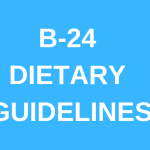How to Tell if Your Baby is Full
Unlike adults, babies can’t push their chairs away from the dinner table and say “No thanks, I’m full.” Though babies inherently balance their intake, it’s up to parents to interpret those cues and recognize when their baby is satisfied. Here are three quick questions to help you determine if your baby has had enough to eat:
Are they Frequently Spitting Up? Every baby spits up at some point. But did you know that some babies who spit up are misdiagnosed with gastroesophageal reflux when the real cause is they’ve just had too much breast milk or formula? Your baby could be overeating if they spit up after eating for 20-25 minutes, but rarely spit-up after eating for 10-15 minutes. If it’s the latter, try limiting mealtimes and see if your baby continues to spit up. Talk to your pediatrician if frequent spitting up continues.
How Long Has it Been Between Feedings? Once a baby weighs seven pounds or more, they should be eating about every three hours. When you wait the full three hours between feedings your baby will be hungry when they start to eat, which will make it easier for both of you and your baby to tell when they are full. Older babies will often start to look around and pull away from the breast or bottle when they are no longer hungry, so look for that as an additional cue.
What Does the Scale Say? Your pediatrician will routinely track your baby’s growth and weight. But, if you’re worried your infant isn’t getting enough nutrition, consider taking them to your pediatrician’s office for more frequent check-ins. It’s also a great way to keep track of growth! If your baby is progressing on schedule, that’s another indication that they’re getting enough to eat at meal times.
Of course, if you are ever worried about your child, check with your pediatrician.





